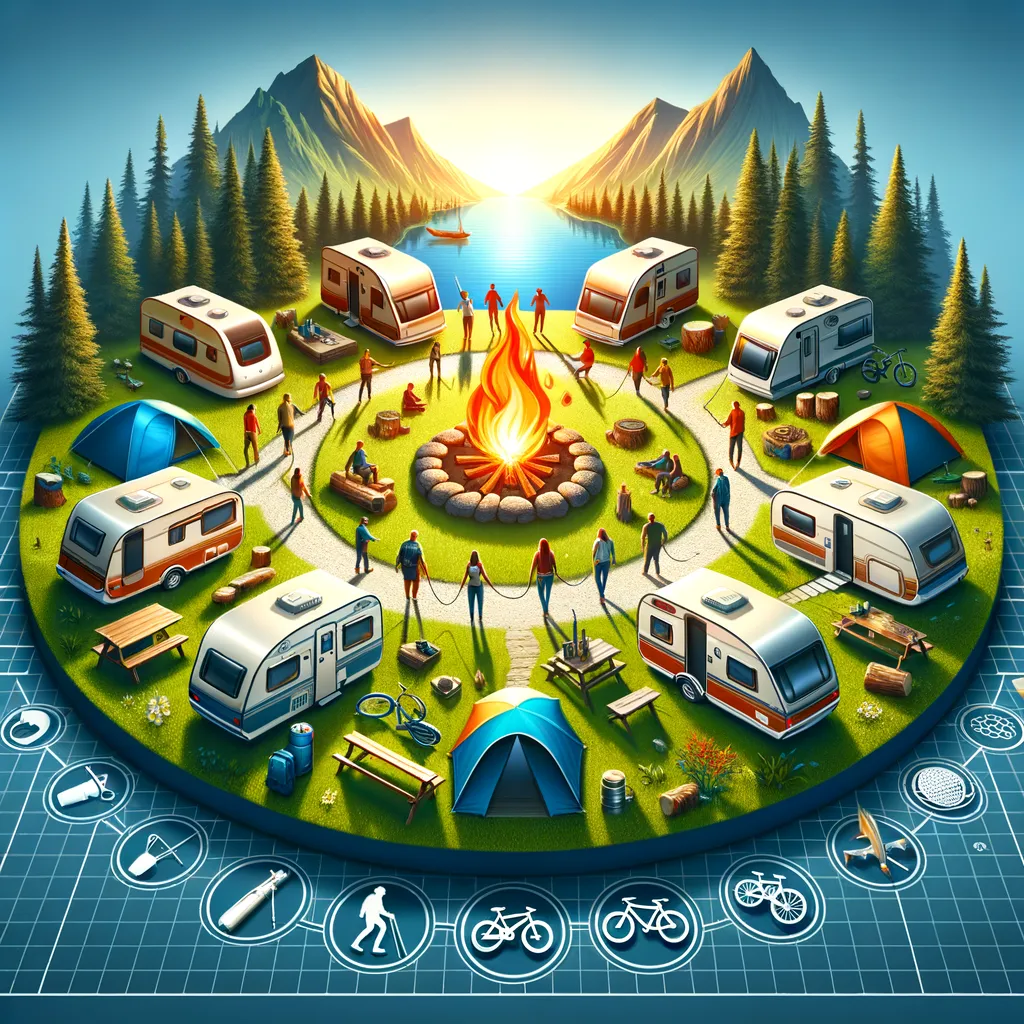A Guide to Sustainable Hiking and Backpacking Gear for Eco-Conscious Parents
Welcome to our extensive guide on embracing the sustainable way of hiking and backpacking with your little adventurers. In today’s eco-conscious world, it’s more crucial than ever to instill values of environmental responsibility and love for nature in our children. By choosing sustainable gear and adopting eco-friendly habits on the trail, you’re not only reducing your carbon footprint but also setting a powerful example for the next generation of outdoor enthusiasts.
Why Choose Sustainable Gear?
The great outdoors gifts us with endless beauty and invaluable experiences. Preserving its integrity through sustainable practices ensures these treasures will be here for centuries to come. Sustainable hiking and backpacking gear are designed with this purpose in mind. By opting for eco-friendly options, you contribute to the reduction of pollution, waste, and the depletion of natural resources, ensuring a greener future for our children.
Understanding the Basics of Eco-Friendly Gear
Before diving into the world of sustainable outdoor equipment, it’s essential to understand what makes a product eco-friendly. Look for gear made from recycled materials, produced through fair labor practices, and designed for durability and minimal environmental impact. Companies that support environmental initiatives or operate on a circular economy model also stand out in the green space. Remember, the most sustainable gear is the one that lasts and avoids the landfill the longest.
Start with What You Have
Embarking on a path towards sustainable hiking doesn’t mean you need to purchase all new gear immediately. The most eco-conscious approach is to use what you already have for as long as possible. Care for your gear properly, repair it when necessary, and only replace items when truly needed. This mindset helps minimize waste and promotes a more thoughtful consumption pattern.
Choosing Sustainable Gear for Your Outdoor Adventures
When the time comes to invest in new gear or replace old items, focusing on sustainability can feel overwhelming due to the wealth of options available. However, selecting eco-friendly gear becomes simpler with a bit of research and guidance. Look for products made from recycled materials, such as PET bottles turned into polyester for clothing and backpacks. Favor items that are durable, repairable, and, if possible, recyclable at the end of their life cycle. Companies that offer gear repair services, take-back programs, or product warranties further support sustainable consumer habits.
Eco-Friendly Clothing and Footwear
The choice of clothing and footwear can significantly impact your environmental footprint. Opt for apparel made from organic, sustainably sourced, or recycled fabrics. Brands committed to reducing their environmental impact often use natural dyes and employ energy-efficient manufacturing processes. For footwear, durability is key. Choose high-quality, repairable shoes that can handle many miles of adventure, reducing the need to replace them frequently.
Durable and Sustainable Backpacks
A reliable backpack is a cornerstone of any hiking or backpacking adventure, especially when trekking with kids. Seek out models designed for longevity, made from recycled or eco-friendly materials. Features to look for include modularity, which allows for easy repairs, and adaptability to accommodate growing children or different family members. Some brands are leading the way in sustainability by offering backpacks made entirely from post-consumer waste while maintaining high standards of functionality and comfort.
Reusable Water Bottles and Food Containers
Staying hydrated and energized is crucial on the trail. Ditch single-use plastics for durable, reusable water bottles and food containers. Stainless steel or BPA-free options are not only better for the environment but also ensure that your family stays healthy, avoiding potentially harmful chemicals found in disposable plastics. Plus, packing your snacks and meals can be a fun and engaging way to teach kids about sustainability and healthy eating habits.
Conclusion
5 Essential Tips for Eco-Conscious Parents on Sustainable Hiking and Backpacking Gear
As eco-conscious parents readying your family for an outdoor adventure, understanding how to choose sustainable hiking and backpacking gear is pivotal. This guide illuminates the path to eco-friendly outdoor experiences, ensuring your adventures tread lightly on the planet while offering enriching experiences for your children.
1. The Importance of Eco-Friendly Preparation
Preparation for hiking or backpacking begins long before you set foot on the trail. Eco-conscious planning involves selecting sustainable gear, but it also encompasses educating your family on the significance of preserving natural habitats. Before your adventure, discuss the impacts of outdoor activities on the environment and the role your gear choices play in mitigating these effects. This holistic approach to preparation not only equips your family with the right gear but also fosters a deeper respect for nature among young hikers.
2. Emphasizing the Use of Existing Gear
The echo of sustainable living resonates with the principle of utilizing what you already own. Encourage your children to appreciate the value of their current possessions by taking stock of existing outdoor gear and assessing its condition together. This can be a learning moment to discuss the environmental impact of consumerism. Teach them about the value of resourcefulness and the joy of making do with what they have, highlighting that experiences in nature are not defined by brand-new or high-tech gear but by the memories created together.
3. Investing in High-Quality and Repairable Gear
When the time arrives to purchase new outdoor equipment, emphasize the importance of quality and longevity. Guide your decision-making by choosing gear constructed with sustainable materials that possess a reputation for durability. Equip your family with knowledge on basic gear repair techniques and consider brands that offer repair services or recycling programs. This approach not only extends the life of your gear but also instills a sense of responsibility and resourcefulness in young adventurers.
4. Practice Responsible Trail Etiquette
Implementing sustainable practices on the trail is as crucial as the gear you bring. Teach your children the principles of Leave No Trace, making sure they understand the importance of minimizing their impact by staying on designated trails, properly disposing of waste, and respecting wildlife. Demonstrating responsible trail etiquette reinforces the message that the natural world is a precious resource deserving of our respect and protection.
5. Encourage Involvement in Environmental Stewardship
Engage your family in environmental stewardship actions beyond hiking and backpacking. Participation in local conservation efforts, outdoor clean-up events, or educational programs about sustainability can foster a deep-seated appreciation and commitment to environmental preservation. This broader engagement helps children make the connection between their actions on the trail and the global effort to protect our planet, empowering them to be proactive stewards of the environment.
Conclusion
Embarking on a journey towards sustainable hiking and backpacking with your family not only enhances your outdoor experiences but also contributes to a greener, more sustainable world. By focusing on preparation, utilizing existing gear, investing in sustainable products, practicing responsible trail etiquette, and engaging in environmental stewardship, eco-conscious parents can instill lifelong values of environmental responsibility in their children. Together, we can ensure that the breathtaking scenery and invaluable experiences provided by the great outdoors will continue to be enjoyed for generations to come. Remember, every step taken on the path to sustainability is a step towards a healthier planet.
Outdoors. Great read on camping
Disclaimer
The articles available via our website provide general information only and we strongly urge readers to exercise caution and conduct their own thorough research and fact-checking. The information presented should not be taken as absolute truth, and, to the maximum extent permitted by law, we will not be held liable for any inaccuracies or errors in the content. It is essential for individuals to independently verify and validate the information before making any decisions or taking any actions based on the articles.




